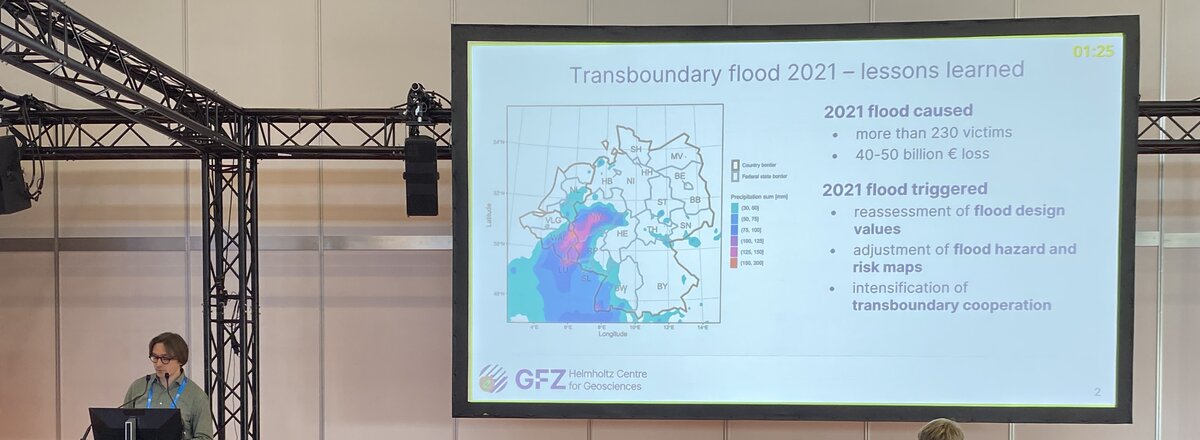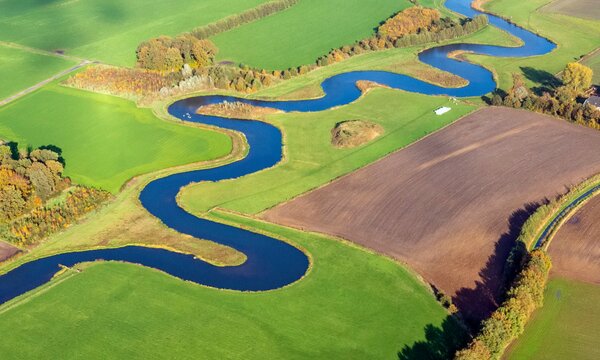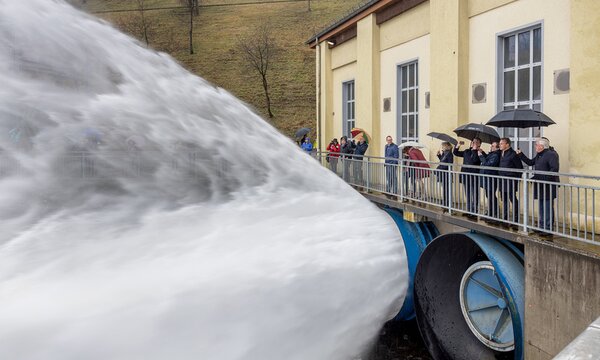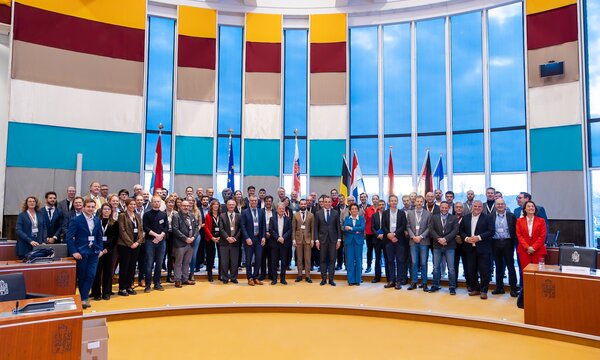Climate change and socio-economic developments are set to escalate the risks of floods and droughts globally. To address these challenges, societies must significantly increase their investments in adaptation strategies. Our recent session at the European Geosciences Union (EGU) General Assembly 2025 highlighted the critical importance of cross-border cooperation in adaptation efforts, drawing lessons from recent disasters such as the 2021 floods in Western Europe. We spoke to Tim Busker and PhD researchers Heather Murdock and Veerle Bril about the event.
Convened by Tim as part of the JCAR ATRACE initiative, with co-conveners Sergiy Vorogushyn, Davide Zoccatelli, Daniela Rodriguez Castro, and Thijs Endendijk, the session embodied JCAR ATRACE's spirit of cross-border knowledge sharing and collaboration. It brought together researchers working on floods, droughts, and multi-hazard risks, emphasising the need for integrated approaches to transboundary water management.
Hydrological systems, like river basins, often transcend administrative borders, whether federal or national. However, current cooperation across these borders remains insufficient. Upstream interventions can inadvertently increase risks for downstream countries and communities, and effective early-warning systems depend heavily on accurate, real-time data from upstream areas - data that can be sensitive to share. Moreover, emergency response efforts benefit greatly from international cooperation; the lack of understanding and collaboration across borders hampers the development of effective adaptation strategies and policies.
Key Topics of Interest
The session aimed to deepen our understanding of flood and drought management in transboundary contexts, including international river basins, aquifers, and reservoirs. Researchers were encouraged to explore various aspects of the disaster risk reduction cycle across different spatial scales - international, regional, and local. Tim remarked, "The diversity was remarkable, with contributions from different parts of the world, ranging from the Meuse to the Horn of Africa."
. 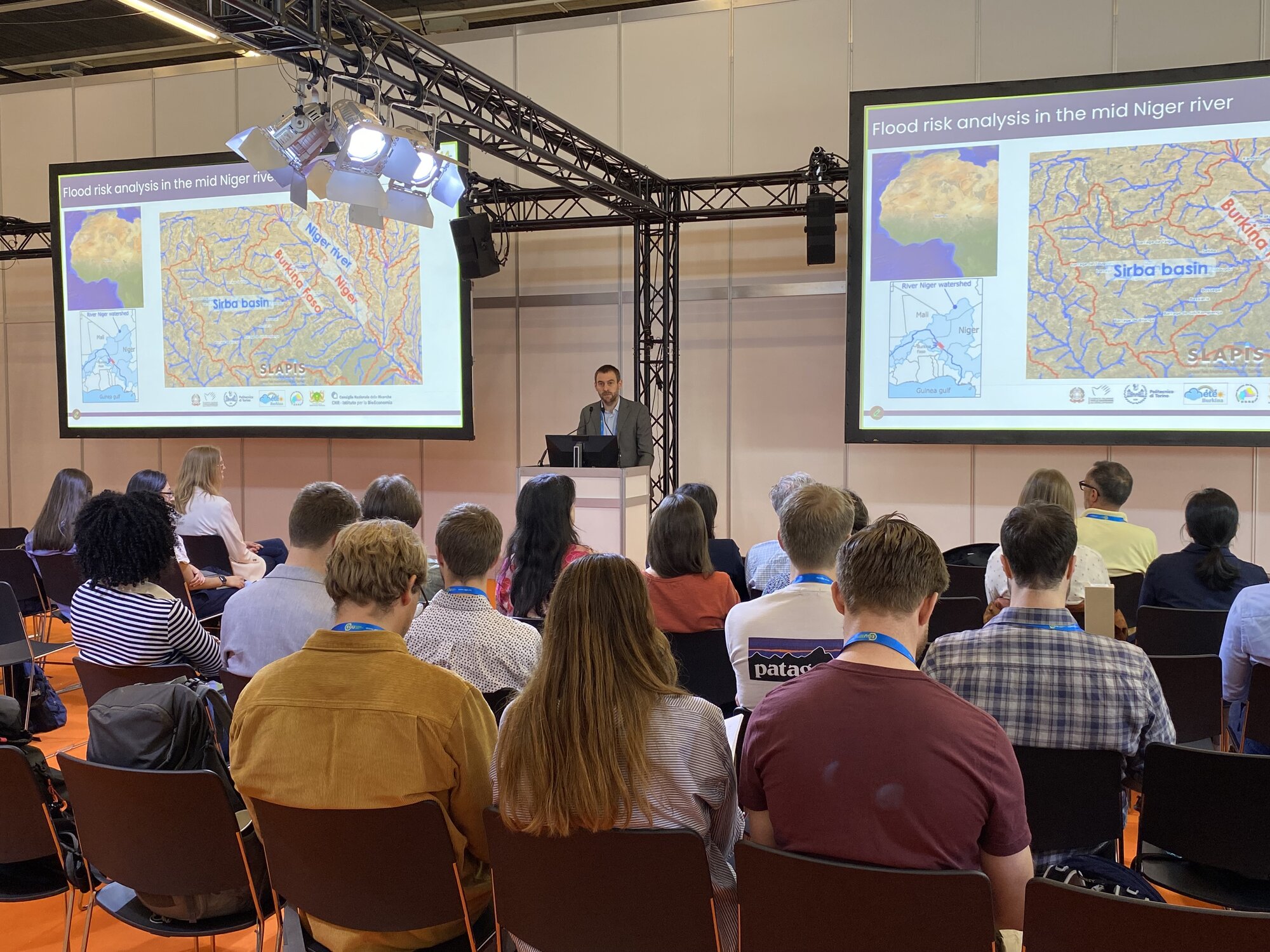
Key topics covered included:
- Risk Analysis: Examining the dynamics of flood and drought risks in both small and large international river basins, focusing on cost and benefit dynamics between upstream and downstream areas.
- Forecasting and Early-Warning Systems: Developing and improving early-warning systems to enhance disaster preparedness and response.
- Socio-Economic Impact Studies: Conducting studies on the socio-economic impacts of disasters to better understand human behavior, disaster damages, response, and recovery.
- Governance and Integrated Water Resources Management: Addressing challenges and opportunities in governance for transboundary aquifers and river basins.
- Nature-Based Solutions: Implementing and assessing the effectiveness of Nature-Based Solutions, including their co-benefits in managing floods and droughts.
- Case Studies: Presenting successful case studies of international cooperation in flood and drought management to share best practices and lessons learned.
Heather Murdock from the University of Potsdam, who was among the presenters, shared her impressions: "The session showcased innovative approaches for addressing transboundary hydrological risks and provided a valuable environment for exchange on research methods. From assessing considerations of climate change for cross-border flood risk management to adaptation measures on multiple scales, I found that the presentations highlighted how multi-disciplinary this topic is."
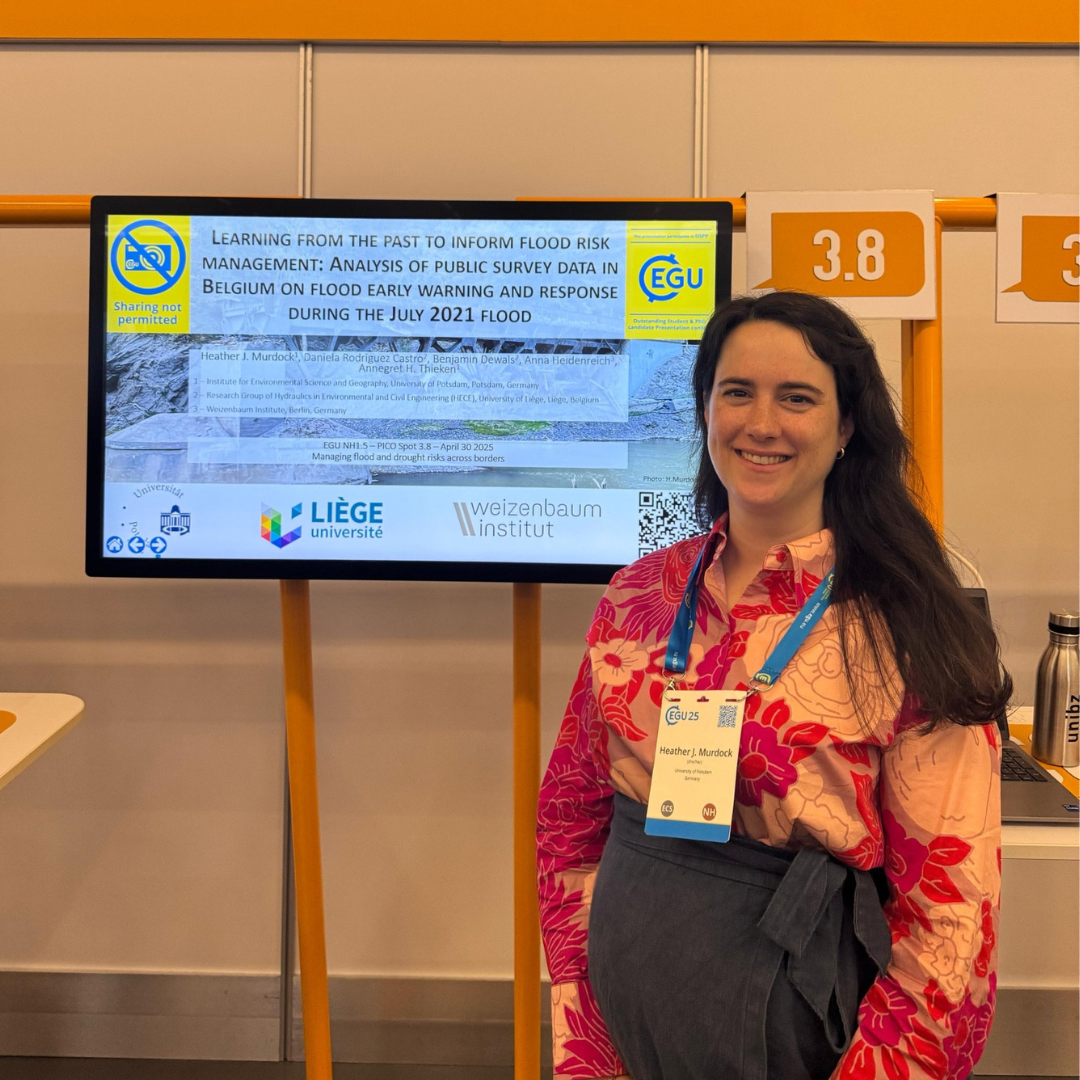
Heather Murdock at EGU 2025
Highlighted Research
In her presentation, Heather analysed flood forecasting, warning, and response systems in Germany and Belgium during the July 2021 floods using household survey data. Using logistic and linear regression models, the study investigates key factors influencing whether people received a warning and knew how to respond to protect themselves and their property. The findings reveal both similarities and notable differences between the two countries. In both Germany and Belgium, the most severely affected households were less likely to have been warned, and few respondents expected the event to be as severe as it was.

Veerle Bril presenting her findings
Among the highlights was a presentation on the Geul catchment by Veerle Bril from VU Amsterdam, part of the Future Flood Risk Management Technologies project funded by NWO. Veerle developed a coupled model (GEB) that integrates hydrology, hydrodynamics, and damage assessment to evaluate both building-level adaptation measures (dry- and wet-proofing) and nature-based solutions (e.g., reforestation, cropland to natural grassland conversion). Results showed that nature-based solutions can reduce flood extent up to 12% and water depth by 10%, while dry-proofing can cut damages by up to 95%. A cost-benefit analysis found almost all measures economically viable, further supporting the importance of adaptive strategies in transboundary contexts.
The full list of presentations is available here.
Do you want to know more about the research by Veerle and Heather, or other conveners present at our EGU session? Please reach out to Tim Busker.
Notably, this was the only session at EGU 2025 dedicated specifically to transboundary management of floods and droughts. It underscored the necessity of collaborative efforts in managing water resources and mitigating the impacts of climate change. By fostering international cooperation and sharing knowledge, we can develop more effective and sustainable adaptation strategies to protect communities from the increasing threats of floods and droughts.
